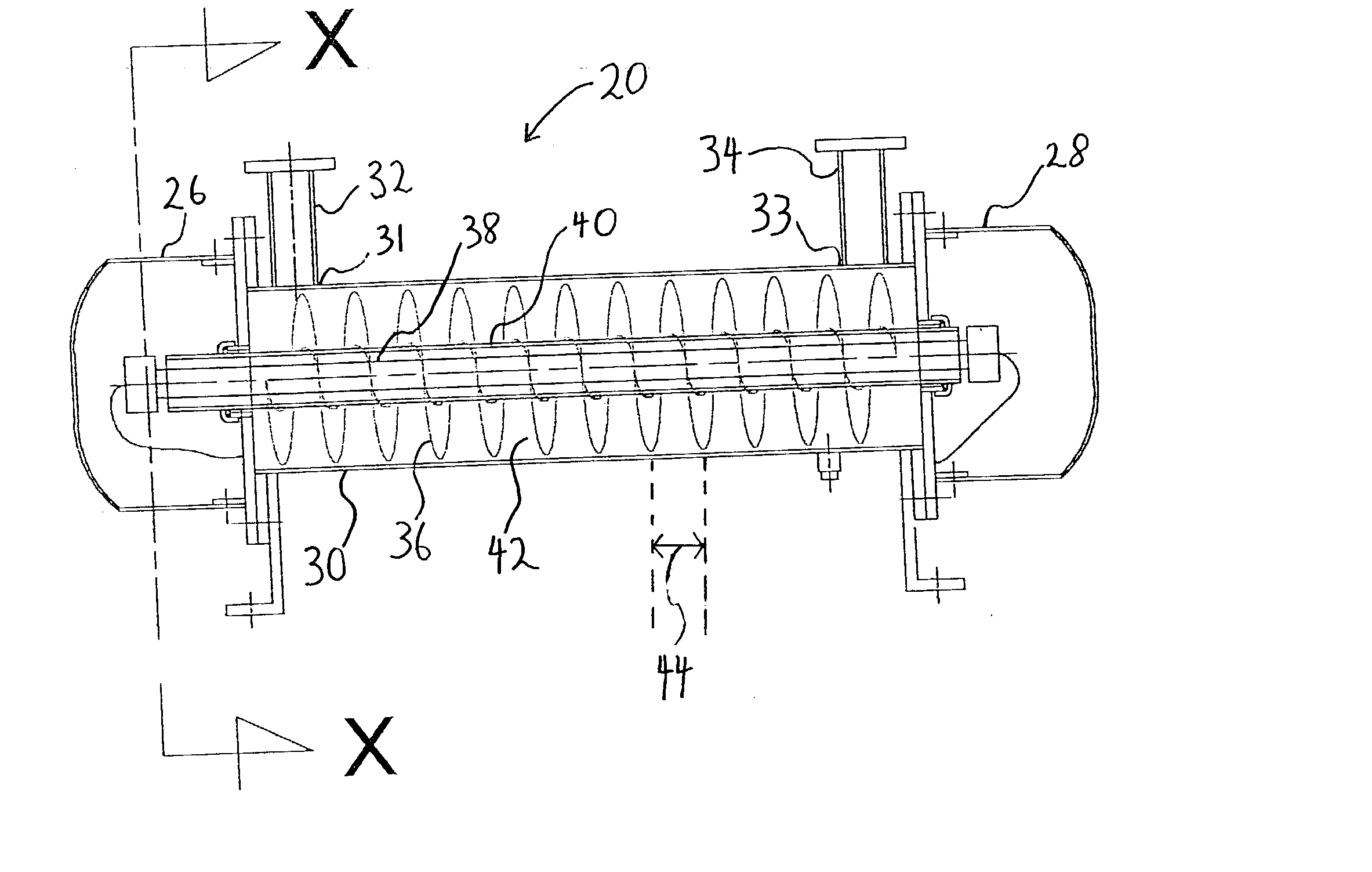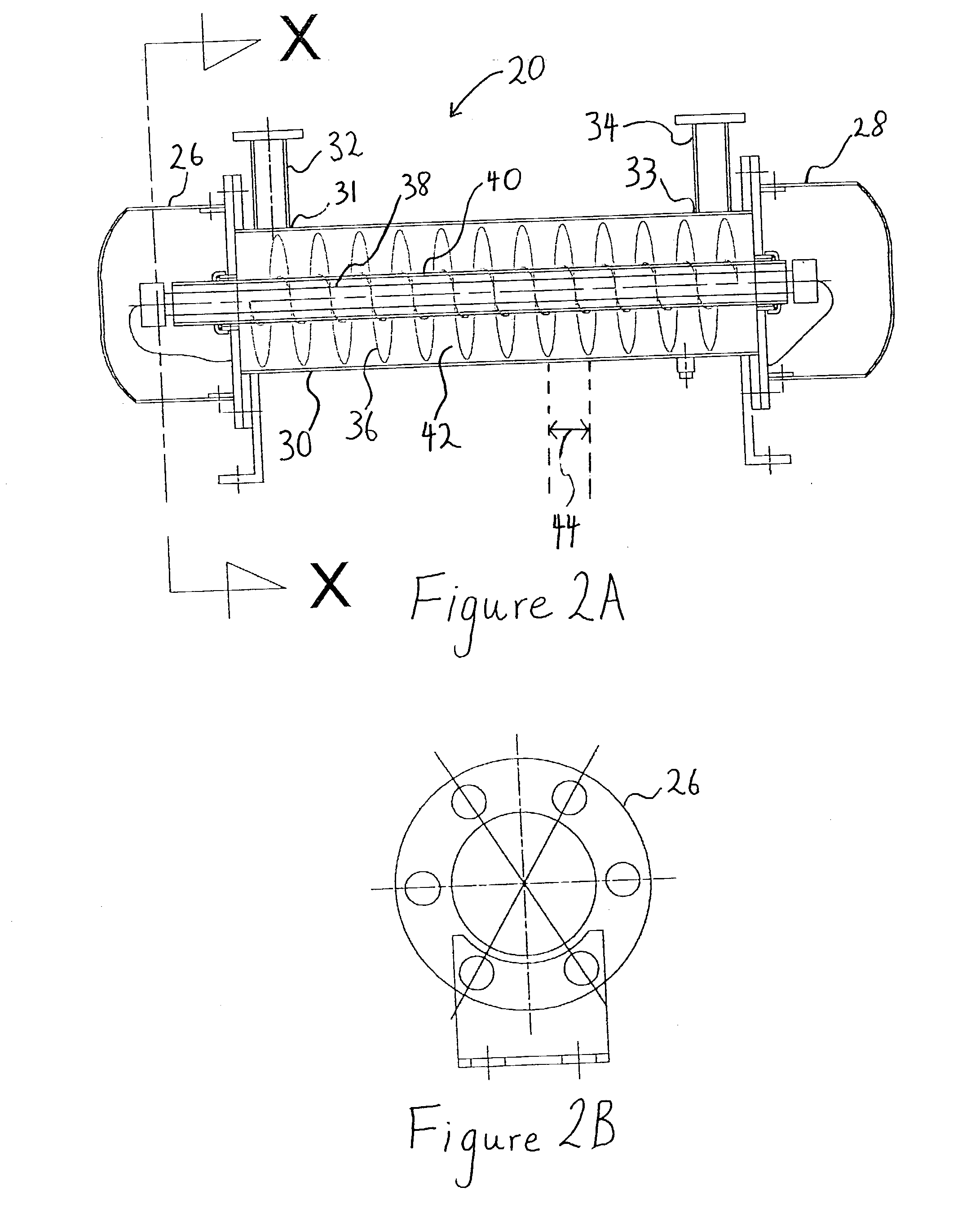Fluid purification and disinfection device
- Summary
- Abstract
- Description
- Claims
- Application Information
AI Technical Summary
Benefits of technology
Problems solved by technology
Method used
Image
Examples
example 2
Examination of the Surface Morphologies and Roughness of Titanium Dioxide Coating
[0038] I. Purpose:
[0039] The glass filmed with titanium dioxide in Example 1 was examined to surface morphology and surface roughness of the titanium dioxide on the coated glass by AFM nano scope and X-ray diffeactometer (XRD).
[0040] II. Method:
[0041] AFM (Nano scope 3a, Digital Instrument, Santa Barbara, Calif.) was used to evaluate the surface roughness and morphologies of the titanium dioxide on the coated glass. The crystallite size of the titanium dioxide on the coated glass was determined by XRD patterns, which were obtained on a Siemens D5005 X-ray diffractometer using Cu K.sub..alpha. radiation at a scan speed of 0.400 s per step with an increment of 0.060.degree. per step. The accelerating voltage and the applied current were 40 kV and 40 mA respectively.
[0042] III. Results:
[0043] The two- and three- dimensional AFM images show that the titanium dioxide coating has a granular microstructure and...
example 3
Antibacterial Activity of Glass Coated with Titanium Dioxide Using Sol-Gel Method
[0044] I. Purpose:
[0045] The glass coated with titanium dioxide in Example 1 was examined to determine the antibacterial activity.
[0046] II. Method:
[0047] 1. 1 ml of E. coli of two strains DH5.sub..alpha. JM 109 and XL1 Blue MRF' cell suspension with 10.sup.4, 10.sup.5 and 10.sup.6 were pipetted individually onto the glass coated with titanium dioxide from Example 1.
[0048] 2. The glass was illuminated by a 15W long wavelength Ultraviolet lamp positioned 4 cm above the glass.
[0049] 3. An amount of 20 or 40 ml aliquots of serially diluted suspension were plated on duplicate LB agar plate at 10 minutes intervals.
[0050] 4. The plates were then incubated at 37.degree. C. for 24 hours and the number of colonies on the plates were counted.
[0051] III. Results:
[0052] The survival percentage of the cells of both strains decreased to zero levels after 50 minutes of ultraviolet illumination.
[0053] IV. Conclusion:
[0...
example 4
Performance Testing for Water Purification
[0055] I. Purpose:
[0056] The apparatus was examined for the water purification capability under a constant flow rate.
[0057] II. Method:
[0058] The apparatus as shown in FIGS. 2A and 2B with titanium dioxide coated surface on the spiral plate of 200 square centimeter was set at a throughput volumetric rate of 2 gallons per minute to treat 400 gallon of water in a total of 200 minutes. When steady rate operation was attained, one sample of the influent and another sample of effluent were collected. These two samples were analysed for two biological water quality parameters namely E. coli and Vibrio Spp. These test procedures were carried out with the physical filter and PCO. The analytical methods were in accordance with the procedures of American Public Health Association Standard Methods (19.sup.th Edition 1995).
[0059] III. Results:
[0060] The number of counts of E. coli was reduced by a 1000 fold and the number of Vibrio Spp. is untraceable i...
PUM
| Property | Measurement | Unit |
|---|---|---|
| Fraction | aaaaa | aaaaa |
| Power | aaaaa | aaaaa |
| Power | aaaaa | aaaaa |
Abstract
Description
Claims
Application Information
 Login to View More
Login to View More - R&D
- Intellectual Property
- Life Sciences
- Materials
- Tech Scout
- Unparalleled Data Quality
- Higher Quality Content
- 60% Fewer Hallucinations
Browse by: Latest US Patents, China's latest patents, Technical Efficacy Thesaurus, Application Domain, Technology Topic, Popular Technical Reports.
© 2025 PatSnap. All rights reserved.Legal|Privacy policy|Modern Slavery Act Transparency Statement|Sitemap|About US| Contact US: help@patsnap.com



